#19th c. nepal
Text

Prithvi Bir Bikram, King of Nepal with his wife Queen Divyeshwari, c. 1886-1900s
186 notes
·
View notes
Text
Daily Current affairs of 7th Feb 2023

Practice daily Current affairs and give quiz for assess your knowledge. Today you can study current affairs of 7th Feb 2023 and this is suitable for almost all type of government competitive exams.
Daily Current affairs for 7th Feb 2023
Q1. Which organisation will receive a grant of Rs 242 Crore to study Lab Grown Diamonds?
A. IISc Bengaluru
B. IIT Madras
C. IIT Delhi
D. IIT Kharagpur
AnswerAnswer IIT Madras
Q2. Dholavira, which was seen in the news, is located in which state/UT?
A. Assam
B. West Bengal
C. Gujarat
D. Arunachal Pradesh
AnswerAnswer Gujarat
Q3. WAPCOS, an engineering consultancy and construction services firm under which Union Ministry?
A. Ministry of Rural Development
B. Ministry of Jal Shakti
C. Ministry of MSME
D. Ministry of Housing and Urban Affairs
AnswerAnswer Ministry of Jal Shakti
Q4. Which Union Ministry issued orders to block over 100 betting and loan-lending Chinese apps?
A. Ministry of External Affairs
B. Ministry of Finance
C. Ministry of Defence
D. Ministry of Electronics and IT
AnswerAnswer Ministry of Electronics and IT
Q5. Which country’s Chief Justice is the chief guest of the 73rd foundation day of the Supreme Court of India?
A. Bangladesh
B. Singapore
C. USA
D. France
AnswerAnswer Singapore
Q6. Who chaired the CEO Conclave at PLASTINDIA 2023?
A. Dharmendra Pradhan
B. Dr Ramesh Pokhiriyal
C. Dr Mansukh Mandaviya
D. Amit Shah
AnswerAnswer Dr Mansukh Mandaviya
Q7. Who has emerged as the world’s most popular leader with an approval rating of 78 per cent in February 2023?
A. Andres Obrador
B. Narendra Modi
C. Alain Berset
D. Justin Trudeau
AnswerAnswer Narendra Modi
Q8. Which country celebrated 75 years of Independence on 4 February 2023, under the theme Namo Namo Matha – A step towards a century?
A. Sri Lanka
B. Bhutan
C. Myanmar
D. Nepal
AnswerAnswer Sri Lanka
Q9. Legendary playback singer Vani Jairam passed away on February 4, 2023. She was awarded the Padma Bhushan in which year?
A. 2020
B. 2021
C. 2022
D. 2023
AnswerAnswer 2023
Q10. Where was the 15th meeting of the standing committee of the Central Zonal Council organised on 4 February 2023?
A. Mathura
B. Chennai
C. Dehradun
D. Kolkata
AnswerAnswer Dehradun
Now Try Quiz of Feb Current Affairs 2023
Attention: You must prepare daily current affairs of Feb 2023 for Quiz, so you can rank better and motivate for your upcoming government exam competition.
Also practice other's day current affairs of Feb 2023
- Current affairs of 1st Feb 2023
- Current affairs of 2nd Feb 2023
- Current affairs of 3rd Feb 2023
- Current affairs of 4th Feb 2023
- Current affairs of 6th Feb 2023
- Current affairs of 7th Feb 2023
- Current affairs of 8th Feb 2023
- Current affairs of 9th Feb 2023
- Current affairs of 10th Feb 2023
- Current affairs of 11th Feb 2023
- Current affairs of 12th Feb 2023
- Current affairs of 13th Feb 2023
- Current affairs of 14th Feb 2023
- Current affairs of 15th Feb 2023
- Current affairs of 16th Feb 2023
- Current affairs of 17th Feb 2023
- Current affairs of 18th Feb 2023
- Current affairs of 19th Feb 2023
- Current affairs of 20th Feb 2023
- Current affairs of 21st Feb 2023
- Current affairs of 22nd Feb 2023
- Current affairs of 23rd Feb 2023
- Current affairs of 24th Feb 2023
- Current affairs of 25th Feb 2023
- Current affairs of 26th Feb 2023
- Current affairs of 27th Feb 2023
- Current affairs of 28th Feb 2023
Read the full article
0 notes
Text
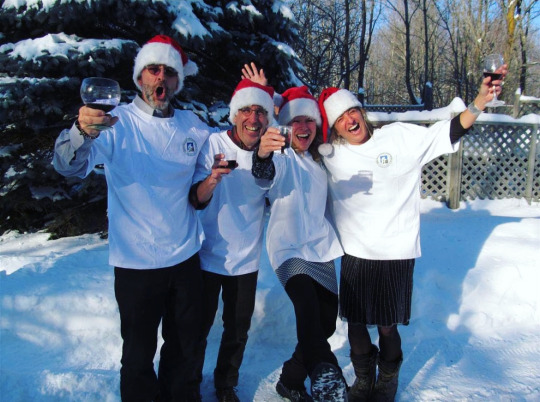
📍let’s celebrate cristmas and New year with us . We have special package for Holiday In Nepal .🙏
📸@hikinghimalayas
---------------------------
✅️🇳🇵Join with Us Manaslu Trekking
Booking Open Now for 2022/23
Fix Departure:
Christmas package : 15th December to 30 December 2022 ( 40% off on Every package)
Book your trip with us and grab a Discount upto 40%. Celebrate your Christmas in the mountains and create a lifetime memorable. Manaslu Circuit Trek is the latest popular strenuous trek in the Himalayan region. This trekking route is a well-loved trekking trail providing unspoiled mountains views, rich culture, and genuine adventure sum up to trek experiences around the Manaslu. This trek has all the features of wilderness trekking in Nepal that includes Buddhist and Hindu culture, wildlife, rhododendron forest, wildflowers, deep valley, raging river, and spectacular mountain scenery. It is located near the border of Nepal alongside Tibet. The circuit is a stunning trek with spectacular views of Mt Manaslu and the Ganesh Himal ranges, among others. During the time of trekking, you will be passing through the Manaslu Conservations area which is home to 11 types of forests. The completed circuit around this Mountain and the crossing of the Larkya La pass is one of Nepal’s best-kept secrets for trekkers seeing of experience the culture and remote area of Nepal.
✅ Day To Day Itinerary
December 15th: Arrive at Kathmandu
December 16th: Drive from Kathmandu to Sotikhola [710m/2328 ft] 8 – 9 Hrs
December 17th: Soti Khola – Maccha Khola [900m/2952 ft] 6 – 7 Hrs
December 18th: Maccha Khola -Jagat [1410m/ 4625 ft] 6 – 7 Hrs
December 19th: Jagat – Deng [1,804m/5917 ft] 6 – 7 Hrs
December 20th Deng – Namrung [2630m/8626ft] 6 – 7 Hrs
December 21st: Namrung – Samagaon [3530m/11,578 ft] 6-7 Hrs
December 22nd: Samagaon – Pungyen gompa – Samagaon 6 – 7 Hrs
December 23rd: Samagaon – Samdo [3860m/12,660 ft] 4 – 5 Hrs
December 24th: Rest Day in Samdo
December 25th: Samdo – Dharamsala/Larkya B. C. [4460m/14, 628 ft] 4 – 5 Hrs
Celebration of Christmas at larkya Base camp with Hiking Himalayas Team.
December 26th: Dharamsala – Larkya la [5160m/16, 924 ft] – Bimthang [3720m/12, 201 ft] 8 – 9 Hrs
December 27th: Bimthang – Tilije [2300m/7544ft] 5 – 6 Hrs
December 28th: Tilje to Besisahar
December 29th: Besisahar to Kathmandu
December 30th: Flights back to Home.
………………………………………………………………….
➡️More information
📞WhatsApp: +9779851051658 or +9779841317337
🌐Visit us: www.hikinghimalayas.com
📩Email :[email protected]
-------------------------------------------------------
#nepal #ebctrekking #ebc
#everest #mteverest #everestbasecamp #kalapatthar #everestbasecamptrekking #ebctrek #khumbu #Himalayaguide #mountainguide #landscape #nature #adventue #ebctrek #everythingaboutnepal #travel #traveller #travelgram #travelers #outdoor #HHTE #trek #tekkinginnepal#EverestBaseCampTrek #hiking #hikingadventure #hikingtrail #hiketoebc #photography
0 notes
Text
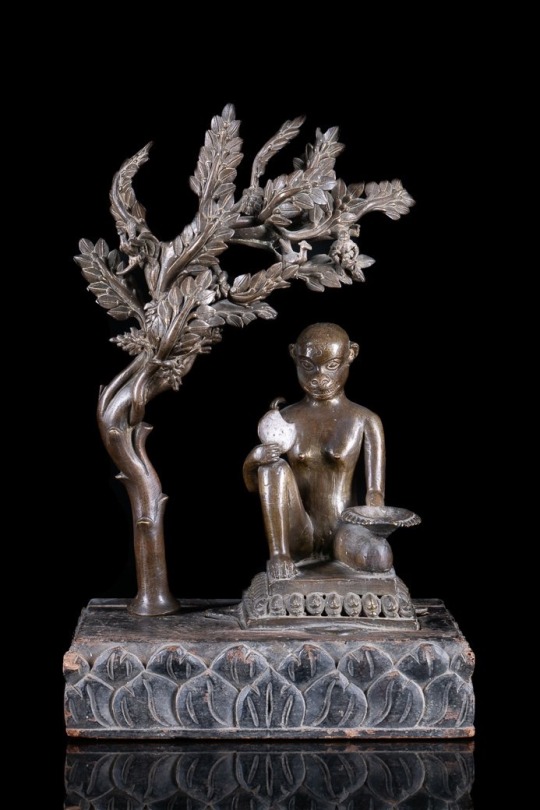
19th C, Religious, Statue of the Hindu Monkey-God Hanuman, Nepal, Bronze.
Spectandum
7 notes
·
View notes
Photo

WASHINGTON DC RESTAURANTS
I only picked one restaurant for each country, but there may be several for that particular ethnic cuisine. I have not gone to all of these, so I can’t stand by how good their food may be. And since restaurants unfortunately close all the time, please Google them before just showing up to see if they’re still operating (and what hours they are open as well.
Afghanistan - Maiwand Grill - 2855, 1764 Columbia Rd NW, Washington, DC 20009
Argentina - Malbec Restaurant - 2433, 1633 17th St NW, Washington, DC 20009
Australia - Oz - 2950 Clarendon Blvd, Arlington, VA 22201
Austria - Leopold's Kafe & Konditorei - 3315 Cady's Alley NW, Washington, DC 20007
Azerbaijan - Kavkaz Kebab - 10902 Boulevard Circle, Owings Mills, MD 21117
Bahamas - 700 Islands Bahamas Cafe & Catering - 1111 3rd St NE, Washington, DC 20002
Bangladesh - Aladdin Restaurant - 5169 Lee Hwy, Arlington, VA 22207
Belgium - Brasserie Beck - 1101 K St NW, Washington, DC 20005
Bolivia - Sibarita Restaurant - 2716, 1939, Washington Blvd, Arlington, VA 22201
Bosnia & Herzegovina - Cosmopolitan Grill - 7770 Richmond Hwy, Alexandria, VA 22306
Brazil - The Grill From Ipanema - 1858 Columbia Rd NW, Washington, DC 20009
Burma - Myanmar Restaurant - 7810-C Lee Hwy, Falls Church, VA 22042
China - Great Wall Szechuan House, 1527 14th St NW, Washington, DC
Colombia - Arepas Pues - 8555 Fenton St, Silver Spring, MD 20910
Cuba - Mi Cuba Cafe - 1424 Park Rd NW, Washington, DC 20010
Czech Republic - Bistro Bohem - 600 Florida Ave NW, Washington, DC 20001
Dominican - Los Hermanos - 1428 Park Rd NW, Washington, DC 20010
Egypt - Fava Pot - 7393 D Lee Highway, Falls Church, VA 22042
El Salvador - La Casita Pupuseria & Market - 8214 Piney Branch Rd, Silver Spring, MD 20910
Eritrea - Keren Restaurant & Coffee Shop - 1780 Florida Ave NW, Washington, DC 20009
Ethiopia - Queen of Sheba Ethiopian - 1503 9th St NW, Washington, DC 20001
France - La Chaumiere - 2813 M St NW, Washington, DC 20007
Georgia - Supra - 1205 11th St NW, Washington, DC 20001
Germany - Biergarten Haus - 1355 H St NE, Washington, DC 20002
Ghana - Appioo African Bar & Grill - 1924 9th St NW, Washington, DC 20001
Great Britain - The Alibi - 237 2nd St NW, Washington, DC 20001
Greece - Kapnos - 2201 14th St NW, Washington, DC 20009
Guatemala - La Bamba Restaurant - 8241 Georgia Ave #201, Silver Spring, MD 20910
Haiti - Gisele Creole Cuisine - 4621, 2407 Price Ave, Silver Spring, MD 20902
Honduras - El Catrachito Restaurant - 2408 University Blvd W, Silver Spring, MD 20902
India - Indigo - 243 K Street Northeast, Washington, DC 20002
Israel - Shouk - 655 K St NW, Washington, DC 20001
Italy - Tortino Restaurant - 1228 11th St NW, Washington, DC 20001
Jamaica - Pimento Grill - 4405 Bowen Rd SE, Washington, DC 20019
Japan - Makoto - 4822 MacArthur Blvd NW, Washington, DC 20007
Kenya - Swahili Village Bar and Grill - 10800 Rhode Island Ave N, Beltsville, MD 20705
Korea - Mandu - 453 K St NW, Washington, DC 20001
Laos - Thip Khao Restaurant - 3462 14th St NW, Washington, DC 20010
Lebanon - Lebanese Taverna - 2641 Connecticut Ave NW, Washington, DC 20008
Malaysia - Penang - 4933 Bethesda Ave, Bethesda, MD 20814
Mexico - Taqueria Habanero - 3710 14th St NW, Washington, DC 20010
Morocco - Marrakech - 1010, 2147 P St NW, Washington, DC 20037
Nepal - Moh Moh Licious - 7414 Georgia Ave #1, Washington, DC 20012
New Zealand - Cassatt's - 4536 Lee Hwy, Arlington, VA 22207
Nicaragua - Rosita Bakery Nica. Gallopinto Llc - 5554 Port Royal Rd, North Springfield, VA 22151
Nigeria - Jodeem African Cuisine - 6000 Greenbelt Rd, Greenbelt, MD 20770
Norway - Calooska Simply Scandinavian - 1309 5th St NE, Washington, DC 20002
Pakistan - Food Corner Kabob & Rotesserie - 2301-H Georgia Ave NW, Washington, DC 20001
Panama - Esencias Panamenas Restaurant - 3322 Georgia Ave NW, Washington, DC 20010
Peru - El Chalan Restaurant - 1924 I St NW, Washington, DC 20006
Philippines - Purple Patch - 3155 Mt Pleasant St NW, Washington, DC 20010
Poland - Polish Market - 431 Maple Ave West, Vienna, VA 22180
Portugal - Tavira - 8401 Connecticut Avenue, Chevy Chase, Maryland 20815
Russia - Mari Vanna DC - 1141 Connecticut Ave NW, Washington, DC 20036
Saudi Arabia - Aldeerah - 262 Cedar Lane SE, Vienna VA
Senegal - Chez Dior - 5124 Baltimore Ave, Hyattsville, MD 20781
Somalia - Kulan - 3821 F South George Mason Dr., Falls Church, VA 22041
Spain - Estadio - 1520 14th St NW, Washington, DC 20005
Sri Lanka - Banana Leaf, 5014 Connecticut Ave NW, Washington DC
Sweden - IKEA College Park - 10100 Baltimore Ave, College Park, MD 20740
Switzerland - Stable DC, 1324 H Street NE, Washington, DC 20002
Thailand - Thai Chef Street Food - 1712 Connecticut Ave NW, Washington, DC 20009
Trinidad & Tobago - DC Crown Bakery - 5409 Georgia Ave NW, Washington DC
Turkey - Ankara - 1320 19th St NW, Washington, DC 20036
Uganda - Little Kampala Bar and Grill - 10110 Washington Blvd N, Laurel, MD 20723
Uzbekistan - Rus Uz - 1000 N Randolph St, Arlington, VA 22201
Venezuela - Arepa Zone - 1121 14th Street NW, Washington DC 20005
Vietnam - Pho Viet - 3513 14th St NW, Washington, DC 20010
Yemen - Marib Restaurant - 6981 Hechinger Dr, Springfield, VA 22151
6 notes
·
View notes
Text
World’s Literature
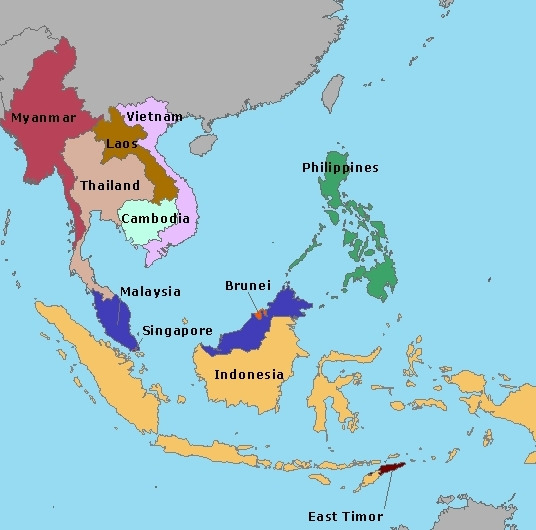
A. Southeast Asia
“All we have to decide is what to do with the time that is given us.” ― J.R.R. Tolkein
Southeast Asia is composed of eleven countries of impressive diversity in religion, culture and history: Brunei, Burma (Myanmar), Cambodia, Timor-Leste, Indonesia, Laos, Malaysia, the Philippines, Singapore, Thailand and Vietnam. Based on my research, the predominant themes of Southeast Asian arts have been religion and national history. In religion the main interest was not so much in actual doctrine but in the life and personality of the Buddha and the personalities and lives of the Hindu gods. In national history the interest was in the legendary heroes of the past, and this theme appeared only after the great empires had fallen and the memories of their glory and power remained. The Buddha image, which went through various stages of development, remained the favorite motif of sculpture and painting. The depiction of scenes from his previous lives in fresco and relief sculpture also had the purpose of teaching the Buddhist ethics to the people, as the Jatakas emphasized certain moral virtues of the Buddha in his previous lives; it also gave an opportunity to the artist to introduce local color by using, as background, scenes from his own contemporary time. The depiction of scenes from the Hindu epics also had the same purpose and gave the same opportunity to the artist. Many figures from the Buddhist and Hindu scriptures, such as gods and goddesses, heroes and princesses, hermits and magicians, demons and dragons, flying horses and winged maidens, became fused with similar native figures, and, gradually, folklore plots became merged in the general religious themes.

B. East Asia
“Only the very weak-minded refuse to be influenced by literature and poetry.” ― Cassandra Clare, Clockwork Angel
East Asia is the eastern region of Asia, which is defined in both geographical and ethno-cultural terms. The modern states of East Asia include China, Hong Kong, Japan, Macau, Mongolia, North Korea, South Korea, and Taiwan. According to my research, some of the themes in East Asia literature are Immortality, Unfaithfulness, Disrespect in the Society, Abused Marriages & Families, Religion, Traditional Practices, Traditional Beliefs and Social Class. Some of the books in East Asia were concerned of the ethical practices that were common in their society. Some of them are about “respect.” Respect is one of the most cherished virtues in the society, and many of the East Asian literatures have always expressed this in different ways, especially the need to respect the elderly and those in power. Another common theme that comes out of the books focuses on the abused marriages. In the two cases, we witness marriage partners engaging in abusive acts against their wives or husbands. There are so many books which possesses such styles and themes in literature.
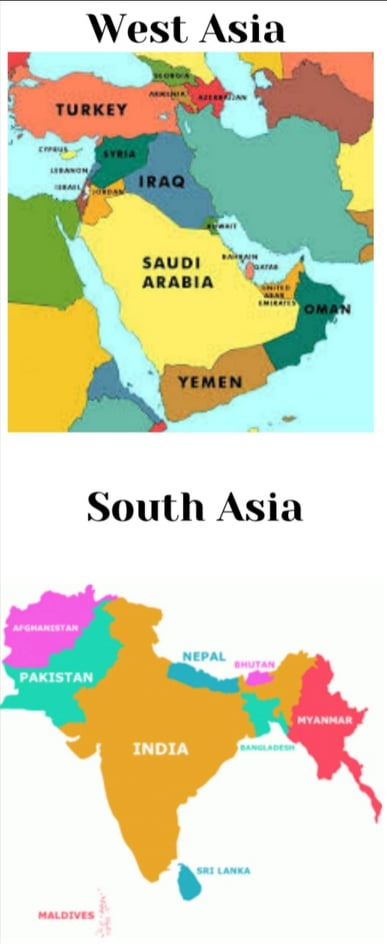
C. South and West Asia
“There is no surer foundation for a beautiful friendship than a mutual taste in literature.” ― P.G. Wodehouse
South Asia or Southern Asia is the southern region of Asia, which is defined in both geographical and ethno-cultural terms. The region consists of Afghanistan, Bangladesh, Bhutan, India, the Maldives, Nepal, Pakistan, and Sri Lanka. The West Asia region comprises of 12 member countries; Bahrain, Iraq, Jordan, Kuwait, Lebanon, Oman, State of Palestine, Qatar, Saudi Arabia, Syrian Arab Republic, United Arab Emirates and Yemen. Based on my research, the peoples of South Asia have had a continuous literature from the first appearance in the Punjab of a branch of the Indo-European-speaking peoples who also settled all of Europe and Iran. In India this branch of Indo-Aryans, as they are usually called, met earlier inhabitants with different languages and no doubt a different culture—possibly a culture akin to that of the Indus Valley civilization, which had a script, and perhaps a literature of its own, of which nothing is known. Certain to have been settled in India were peoples who spoke languages of Dravidian origin, as well as other languages, called Munda, now preserved only by aboriginal tribes, which show affinities with the languages of Southeast Asia. In the Hellenistic period literature and culture flourished in Western Asia. Traditional literary forms such as lists continued to be produced by the native population and were adapted by the new rulers. While there is little evidence for the creation of new narrative literature, which may in part be due to the fragmentary nature of our sources, existing epics, wisdom texts, and folktales were retold, rewritten, and transmitted. Greeks living in Western Asia created historiographical, ethnographical, and geographical works about their surroundings, inspiring in turn the Babylonian priest Berossus to write a reference work on Babylonia in Greek. Much as during the Persian Empire, political instability and changes in power led to a diverse and independent culture of writing. Continuity in all genres, writing systems, and languages remains the most important characteristic of Western Asian literature at least to the beginning of the Christian era.
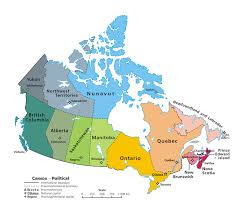
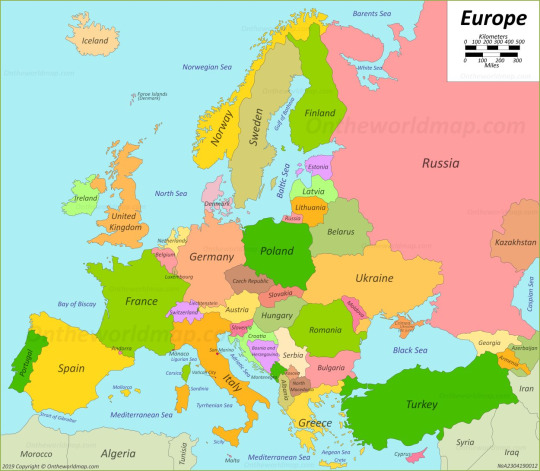
D. Anglo-America and Europe
“Literature is the most agreeable way of ignoring life.” ― Fernando Pessoa, The Book of Disquiet
Anglo-America most often refers to a region in the Americas in which English is a main language and British culture and the British Empire have had significant historical, ethnic, linguistic and cultural impact. Europe is a continent located entirely in the Northern Hemisphere and mostly in the Eastern Hemisphere. It comprises the westernmost part of Eurasia and is bordered by the Arctic Ocean to the north, the Atlantic Ocean to the west, the Mediterranean Sea to the south, and Asia to the east. Based on my research, like other national literatures, American literature was shaped by the history of the country that produced it. For almost a century and a half, America was merely a group of colonies scattered along the eastern seaboard of the North American continent—colonies from which a few hardy souls tentatively ventured westward. After a successful rebellion against the motherland, America became the United States, a nation. By the end of the 19th century this nation extended southward to the Gulf of Mexico, northward to the 49th parallel, and westward to the Pacific. By the end of the 19th century, too, it had taken its place among the powers of the world—its fortunes so interrelated with those of other nations that inevitably it became involved in two world wars and, following these conflicts, with the problems of Europe and East Asia. Meanwhile, the rise of science and industry, as well as changes in ways of thinking and feeling, wrought many modifications in people’s lives. All these factors in the development of the United States molded the literature of the country. Western European literature could be viewed as a parade of movements—Romanticism, Realism, Naturalism, Futurism, Structuralism, and so on indefinitely. European literature refers to the literature of Europe. European literature includes literature in many languages; among the most important of the modern written works are those in English, Spanish, French, Dutch, Polish, German, Italian, Modern Greek, Czech and Russian and works by the Scandinavians and Irish. Important classical and medieval traditions are those in Ancient Greek, Latin, Old Norse , Medieval French and the Italian Tuscan dialect of the renaissance. European literature, also known as Western literature, is the literature written in the context of Western culture in the languages of Europe, as several geographically or historically related languages. Diverse as they are, European literatures, like Indo-European languages, are parts of a common heritage belonging to a race of proud nations which boast the likes of Homer who wrote Iliad and Odyssey, Virgil who wrote the Aeneid, Dante who wrote Divine Comedy, Chaucer who wrote Canterbury Tales. These, and other literary masterpieces form part of what we call as Western Canon.

E. Africa
“Literature is a textually transmitted disease, normally contracted in childhood.” ― Jane Yolen
Africa is the world's second-largest and second-most populous continent, after Asia in both cases. At about 30.3 million km² including adjacent islands, it covers 6% of Earth's total surface area and 20% of its land area. With 1.3 billion people as of 2018, it accounts for about 16% of the world's human population. Based on my research about Africa’s Literature. Afro-Asiatic and African languages together with works written by Africans in European languages. Traditional written literature, which is limited to a smaller geographic area than is oral literature, is most characteristic of those sub-Saharan cultures that have participated in the cultures of the Mediterranean. In particular, there are written literatures in both Hausa and Arabic, created by the scholars of what is now northern Nigeria, and the Somali people have produced a traditional written literature. There are also works written in Geʿez (Ethiopic) and Amharic, two of the languages of Ethiopia, which is the one part of Africa where Christianity has been practiced long enough to be considered traditional. Works written in European languages date primarily from the 20th century onward. The literature of South Africa in English and Afrikaans is also covered in a separate article, South African literature.
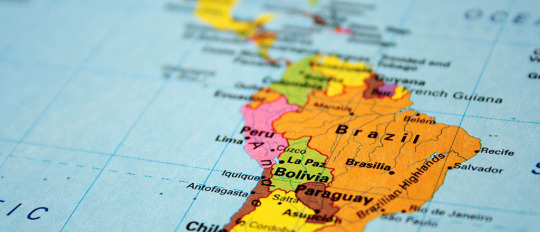
F. Latin America
“Literature is news that stays news.” ― Ezra Pound
Latin America is a group of countries and dependencies in the Western Hemisphere where Romance languages such as Spanish, Portuguese, and French are predominantly spoken. According to my research about Latin America’s Literature. Romanticism, Realism, Naturalism, and Emerging Literary Trends. The Latin American wars of Independence that occurred in the early nineteenth century in Latin America led to literary themes of identity, resistance, and human rights. Latin American literature, the national literatures of the Spanish-speaking countries of the Western Hemisphere. Historically, it also includes the literary expression of the highly developed American Indian civilizations conquered by the Spaniards. Over the years, Latin American literature has developed a rich and complex diversity of themes, forms, creative idioms, and styles. A concise survey of its development is provided here. For a history of literature written in Portuguese in Brazil, see Brazilian literature. Latin American literature refers to written and oral works created by authors in parts of North America, South America, and the Caribbean. Latin American authors usually write in Spanish, Portuguese, English, or a language native to their specific country. Latin American writers working in the United States can be classified as writing Latin American literature too. Latin American literature has a rich history starting in the Pre-Colombian period and working all the way up to modern day. With each period of Latin American history, came a genre that dominated the field. In this lesson, we will look at the main periods of Latin American literature, the genres that fueled those periods, and authors who are well known in Latin American literature.
Source:
Wikipedia, Britannica, Google and Online Library.
Saunar, Rhenz Rhyanne
11 - St. Alypius
7 notes
·
View notes
Text
References
Always (no date). Always want to help #EndPeriodPoverty to keep girls in school & confident. [Online] [Accessed on 26th October 2019]
https://always.com/en-us/about-us/end-period-poverty
Always (no date). Helping Girls Across the World. [Online] [Accessed on 24th October 2019]
https://always.com/en-us/about-us/girl-empowerment-throughout-the-world-with-always
Always (No Date) Image of a woman sorting through Always donations. [Online Image] [Accessed on 26th October 2019]
https://always.com/en-us/about-us/end-period-poverty
BBC News (2019). ‘Free sanitary products scheme expands in Scotland.’ BBC News. [Online] 17th January. [Accessed on 26th October 2019]
https://www.bbc.co.uk/news/uk-scotland-46904775
Buckley, T., Gottlieb, A. (1988) Blood Magic: the anthropology of menstruation. California: University of California Press
Period Positive (No Date) A Period Postive Pledge. [Online Image] [Accessed on 19th October 2019]
https://periodpositive.wordpress.com/
Period Positive Wordpress (No Date) The Period Positive Pledge. Period Positive. [Online] [Accessed on 19th October 2019]
https://periodpositive.wordpress.com/
Quint, C. (2019) ‘From embodied shame to reclaiming the stain: Reflections on a career in menstrual activism’ The Sociological Review. 64(4) pp. 927-942
Rodino-Colocino, M. (2012) ‘Misogyny’ in Koust, M. (ed.) Encyclopaedia of gender in media. Thousand Oaks: SAGE Publications, pp.235-236
Stockton, R. (2015) Let It Bleed: A Peoples History Of Menstruation. 1st March. All that’s interesting. [Online] [Accessed on 16th October 2019]
https://allthatsinteresting.com/menstruation-history
The Homeless Period (No Date) A statement made for #TheHomelessPeriod. [Online Image] [Accessed on 26th October 2019]
thehomelessperiod.com/
The Jaded Project (2018). Period Poverty. 31st January. [Online] [Accessed on 23rd October 2019]
https://www.thejadedproject.org/woman/2018/2/20/period-poverty-low-income-families-in-uk
The New York Times (2013) Women in Nepal are Exiled Each Month [Online Video] [Accessed on 8th October 2019]
https://www.youtube.com/watch?v=UgQ54CZ6uLQ&feature=youtu.be&fbclid=IwAR3AhOIUCTIn0gZVhLBcjmFVfU9wT8TV2UwRSPgMez6gj1SqtVhcT3O7L90
Ulsperger, J. S. (2014) ‘Taboo’ in Forsyth, C. J, Copes, H. (ed.) Encyclopaedia of Social Deviance. Thousand Oaks, CA: SAGE Publications. pp. 727-728
Vasavan, T. (2017) 7 facts about period poverty in the UK. Global Women Connected. [Online] [Accessed on 22nd October 2019]
http://www.globalwomenconnected.com/2017/11/5-facts-period-poverty-uk/
Yakupitiyage, T. (2019) ‘Break the Menstrual Taboo’ IPS Inter Press Service [Online] 8th March. [Accessed on 7th October 2019]
https://go-gale-com.mmu.idm.oclc.org/ps/i.do?p=ITOF&u=mmucal5&id=GALE|A577496756&v=2.1&it=r&sid=summon
1 note
·
View note
Photo

Every donation goes to my Nepal projects starting next week August 19th. https://paypal.com/pools/c/116576205671289377 (at San Angelo, Texas) https://www.instagram.com/p/CSZNeoTL3i5/?utm_medium=tumblr
0 notes
Note
in the soulmark universe, I know hat there's a lot of secrecy surrounding your soulmark and it's kept hidden away, and there is less of a stigma towards same-sex couples, but how would this all play out in the modern time? would gay marriage be almost universally legal? and what about the secrecy of one's soulmark?
haaaaaa, that is why I write nothing in modern times and am still pretty dissatisfied by the one prompt I attempted. I honestly don’t know! But here’s some waffling about it under the cut:
I think just because gay marriage is recognized a lot of places now, some form of gay marriage would exist everywhere. British imperialism is good for one thing and one thing exactly in the modern day, I guess-- the spread of the idea that your soulmark refers to the one person you’re supposed to marry, which means that eventually Matlock’s party triumphs, and you have an ahistorically early legal gay marriage that gets imported and imposed on other countries subject to British rule. (I feel compelled to point out, ‘while exterminating a lot of interesting, intricate and nuanced understandings of soulmarks, sexuality and romance in indigenous cultures.) I’d say... in the Commonwealth, the US, the EU, India, Nepal, Hong Kong, South Africa, certain parts of the Caribbean, Argentina, Ethiopia, and... maybe Japan (due to the late 19th c. industrialization push and the emphasis then put on British-Japanese relations?) there’s legal gay marriage. In the African Union, I think there’s currently a lot of debate over whether or not all member states should recognize gay marriage, or preserve traditional partnerships, a debate that’s been exacerbated rather than helped by British imperialism.
But then of course, you get all these national ideologies that intersect and interact with new trends and various social acceptance. Is there gay marriage in Latin America, considering the Spanish influence would make the 19th c. ruling populations see soulmarks as the name of one’s particular saint? Or like, even in the EU there’d be trouble with Spain itself! Did the founding members of the EU insist that anyone who wanted to join had to recognize gay marriage? And what about Russia? I made this up for the Countess Lieven and it never made it into the fic itself, but I thought that in Russia a soulmate was someone who saved your soul-- whether it be religious, spiritual, literal, etc. But something very dramatic and broody. Certain segments of the population might consider it weird, or possibly cheapening the spiritual bond to marry one’s soulmate. Like, it wouldn’t be weird to have someone of the same sex as your soulmate, but it would be weird to marry someone of the same sex? BUT HOW DID THE BOSLEVIKS REVOLUTIONIZE RUSSIAN CONCEPTIONS OF SOULMARKS DID IT CHANGE WHEN THE USSR FELL, etc.
The privacy of soulmarks is a whole separate concern. Would covering up soulmarks be a big, divisive feminist issue a la the hijab? Would there be dating websites where all you upload is a picture of your soulmark? Would desperate, dramatic people try to make viral YouTube videos where their marks are revealed in order to try and find their soulmate? Would there be special breeds of tattoo artists to particularly cover up or alter soulmarks???
SO MANY QUESTIONS
10 notes
·
View notes
Text

A Nepalese princess, probably in the Early Shamsher Rana Era of Nepal, 1895
#nepal#mdpcostume#asian costume#mdpasia#costume#national dress#traditional dress#traditional costume#19th c. nepal#photography
626 notes
·
View notes
Text
Daily Current affairs of 28th Jan 2023

Practice daily Current affairs and give quiz for assess your knowledge. Today you can study current affairs of 28th Jan 2023 and this is suitable for almost all type of government competitive exams.
Daily Current affairs for 27th Jan 2023
Q1. What is the name of the fifth stealth Scorpene class Submarine, which was recently commissioned into the Indian Navy?
A. INS Vagir
B. INS Virat
C. INS Vaaman
D. INS Vajra
Answer INS Vagir
Q2. Which institution launched an information database including a repository of information pertaining to municipal bonds?
A. RBI
B. SEBI
C. IRDAI
D. NSE
Answer SEBI
Q3. World Bank has appreciated which country for its transition from poorest to one of the fastest growing countries?
A. India
B. Indonesia
C. Bangladesh
D. Nepal
Answer Bangladesh
Q4. As per the Finance Ministry data, the Atal Pension Yojana (APY) subscribers figure crossed which milestone in 2022?
A. 1 million
B. 10 million
C. 5 million
D. 50 million
Answer 10 million
Q5. Which state announced to book men who marry minor girls under stringent laws prescribing imprisonment?
A. West Bengal
B. Assam
C. Telangana
D. Odisha
Answer Assam
Q6. Which country announced the introduction of the Debbie Hockley Medal to honour the outstanding female cricketer?
A. England
B. New Zealand
C. West Indies
D. Australia
Answer New Zealand
Q7. Who has become the first Asian to bag an Oscar nomination for Best Actress, in January 2023?
A. Ke Huy Quan
B. Kerry Washington
C. Michelle Yeoh
D. Gong Li
Answer Michelle Yeoh
Q8. On 26 January 2023, how many personnel have been awarded the President's Fire Service Medals for distinguished service?
A. 39
B. 43
C. 47
D. 51
Answer 47
Q9. Yoshio James Yoda passed away on 23 January 2023. He was a famous _______.
A. Doctor
B. Lawyer
C. Actor
D. Footballer
Answer Actor
Q10. Who has been elected as the President of the Indian Paper Manufactures Association (IPMA) at the 23rd Annual Session of IPMA in January 2023?
A. Pawan Agarwal
B. Ajay Kumar Srivastava
C. Sujoy Lal Thaosen
D. Ajit Kumar Saxena
Answer Pawan Agarwal
Now Try Quiz of Jan Current Affairs 2023
Attention: You must prepare daily current affairs of January 2023 for Quiz, so you can rank better and motivate for your upcoming government exam comptition.
Also practice other's day current affairs of Jan 2023
- Current affairs of 1st Jan 2023
- Current affairs of 2nd Jan 2023
- Current affairs of 3rd Jan 2023
- Current affairs of 4th Jan 2023
- Current affairs of 5th Jan 2023
- Current affairs of 6th Jan 2023
- Current affairs of 7th Jan 2023
- Current affairs of 8th Jan 2023
- Current affairs of 9th Jan 2023
- Current affairs of 10th Jan 2023
- Current affairs of 11th Jan 2023
- Current affairs of 12th Jan 2023
- Current affairs of 13th Jan 2023
- Current affairs of 14th Jan 2023
- Current affairs of 15th Jan 2023
- Current affairs of 16th Jan 2023
- Current affairs of 17th Jan 2023
- Current affairs of 18th Jan 2023
- Current affairs of 19th Jan 2023
- Current affairs of 20th Jan 2023
- Current affairs of 21st Jan 2023
- Current affairs of 22nd Jan 2023
- Current affairs of 23rd Jan 2023
- Current affairs of 24th Jan 2023
- Current affairs of 25th Jan 2023
- Current affairs of 26th Jan 2023
- Current affairs of 27th Jan 2023
- Current affairs of 28th Jan 2023
- Current affairs of 29th Jan 2023
- Current affairs of 30th Jan 2023
- Current affairs of 31st Jan 2023
Video Current Affairs MCQs of 25th Jan 2023
Read the full article
0 notes
Photo

Happy Friday!
⠀⠀⠀⠀⠀⠀⠀⠀⠀
Old Maps Library reprint map of British India is a highly decorative and detailed mid-19th century map, (including Nepal) which was drawn and engraved by J. Rapkin (vignettes by A. H. Wray & G. Greenback) and published in John Tallis’s Illustrated Atlas (London & New York: c.1851).
⠀⠀⠀⠀⠀⠀⠀⠀⠀
An interesting feature of the map is the depiction of the then proposed railway lines running from Bombay to Delhi and Calcutta.
⠀⠀⠀⠀⠀⠀⠀⠀⠀
From the first opening in 1853, the railway network has become an integral feature of modern India.
⠀⠀⠀⠀⠀⠀⠀⠀⠀
The map has also illustrated views of Lahore; Cootub Minar, Delhi; an Indian procession, and Belouche tribesmen.
⠀⠀⠀⠀⠀⠀⠀⠀⠀
For 200 years, from the mid 18th Century to independence and partition in 1947. The rule of the British in India is possibly the most controversial and the most hotly debated aspect of the history of the British empire.
⠀⠀⠀⠀⠀⠀⠀⠀⠀
“Travel back to moments in time and discover the world heritage!”
⠀⠀⠀⠀⠀⠀⠀⠀⠀
⏳Old Maps Library specialises in the reprint of Vintage Maps and Illustrations between the 17th to 19th centuries.
⠀⠀⠀⠀⠀⠀⠀⠀⠀
⏳ We have a beautiful collection of Old Maps and Vintage Illustrations on our website. Link on our bio.
.
.
.
#mapsandatlases #mapsandglobes #haritalar #ancientmaps #oldmapsandprint #oldmapslibrary #vintagemapsforsale #mapsofantiquity #retromap #mapsandatlases #mapa #haritalar # mapart #mapping #decorativemap #oldprint #cartographic #oldworld #coolmaps #amazingmaps #oldprints #vintagehomedecor #moremaps #mapsandglobes #shopsmall #supportsallbusinesses #whoneedsamap #vintagehomedecore #historygeek #britishindiamap (at London, Unιted Kingdom)
https://www.instagram.com/p/CGHzraIJlEg/?igshid=16dp028r15eyo
#mapsandatlases#mapsandglobes#haritalar#ancientmaps#oldmapsandprint#oldmapslibrary#vintagemapsforsale#mapsofantiquity#retromap#mapa#mapping#decorativemap#oldprint#cartographic#oldworld#coolmaps#amazingmaps#oldprints#vintagehomedecor#moremaps#shopsmall#supportsallbusinesses#whoneedsamap#vintagehomedecore#historygeek#britishindiamap
1 note
·
View note
Photo
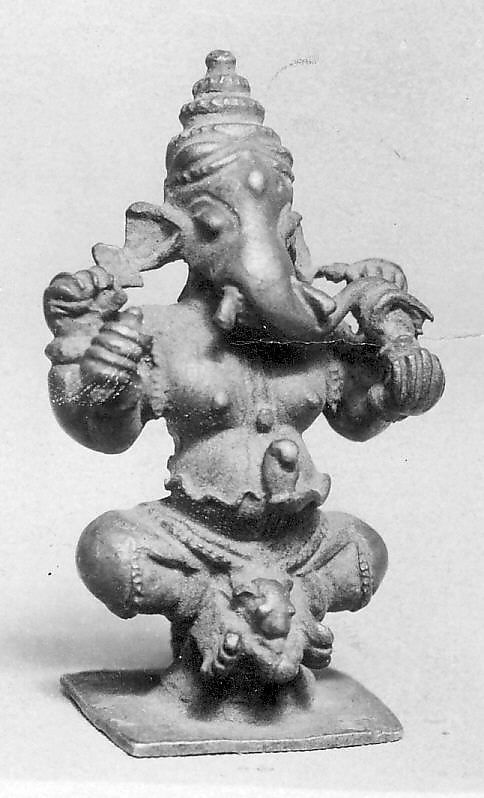



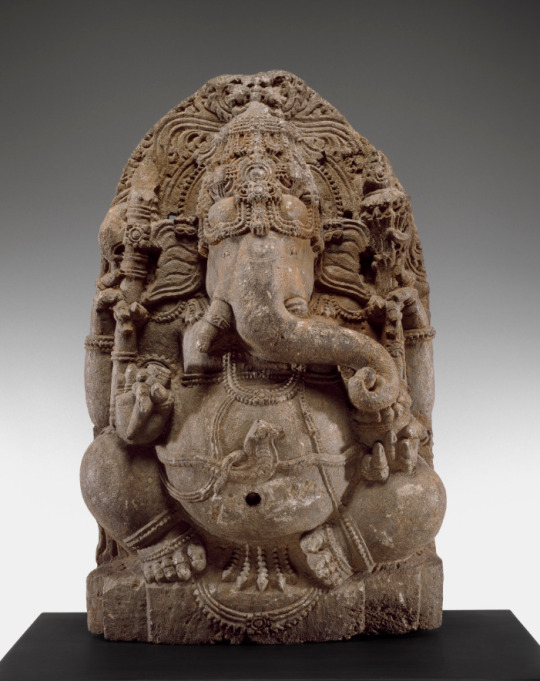
1. The Metropolitan Museum of Art, 17th/18th c., bronze. South India.
2. The Metropolitan Museum of Art, 16th/17th c., wood. Nepal, Kathmandu Valley.
3. San Diego Museum of Art, 19th c., bronze. India.
4. The Metropolitan Museum of Art, ca. 1775, ink and watercolor on paper. India.
5. The Virginia Museum of Fine Arts, 12th c., gray schist. India.
0 notes
Photo

The Naqsh-e Rostam (Persepolis, Fars province, Iran 🇮🇷), the necropolis of the Achaemenid dynasty (c. 550–330 BC), with four large tombs of Darius II, Artaxerxes I, Darius I and Xerxes I cut high into the cliff face. . JOIN MY EXPEDITIONS 🌍! . ▪Nepal 🇳🇵: Dec 9th-22nd, 2019 ▪South Sudan 🇸🇸: Feb 7th-15th, 2020 ▪Iran 🇮🇷: Apr 5th-19th, 2020 ▪Ethiopia 🇪🇹: May 19th-26th, 2020 . ℹ PM me or website (link in bio) . https://www.instagram.com/p/B4mIyKdo7sB/?igshid=1p32z5bz3ymsx
0 notes
Link
Top Attractions in India Geographically India stretches from the tropical lushness of the Indian Ocean coasts to the high Himalaya, with virtually every conceivable terrain between. Combine this with a history dating back thousands of years and the result is a land of incredible diversity and endless fascination.
A rich melting pot of religions and languages, regional cultural and culinary traditions and festivals, splendid artistic and architectural styles. Climate- India has such a wide range of climatic factors that it’s impossible to pin down the best time to visit weather-wise with any certainty.
Broadly speaking October to March tend to be the most pleasant months over much of the country. In the far south, the monsoon weather pattern tends to make January to September more pleasant, while Sikkim and the areas of northeastern India tend to be more palatable between March and August, and Kashmir and the mountainous regions of Himachal Pradesh are at their most accessible between May and September.
The deserts of Rajasthan and the northwestern Indian Himalayan region are at their best during the monsoon.
India is a land of festivals and fairs. Every day of the year there is a festival celebrated in some part of the country. Some festivals welcome the seasons of the year, the harvest, the rains, or the full moon. Others celebrate religious occasions, the birthdays of divine beings, saints, and gurus (revered teachers), or the advent of the New Year. A number of these festivals are common to most parts of India. However, they may be called by different names in various parts of the country or may be celebrated in a different fashion.
Religion- religion seeps into every facet of Indian life. Despite being a secular democracy, India is one of the few countries in which the social and religious structures that define the nation’s identity remain intact, and have continued to do so for at least 4000 years despite invasions, persecution, European colonialism and political upheaval. Change is inevitably taking place as modern technology reaches further and further into the fabric of society but essentially rural India remains much the same as it has for thousands of years. So resilient are its social and religious institutions that it has absorbed, ignored or thrown off all attempts to radically change or destroy them.
Hinduism- India’s major religion, Hinduism, is practiced by approximately 81% of the population. In terms of the number of adherents, it’s the largest religion in Asia and one of the world’s oldest extant faiths. Hinduism has a vast pantheon of gods, a number of holy books and postulates that everyone goes through a series of births or reincarnations that eventually lead to spiritual salvation. With each birth, you can move closer to or further from eventual enlightenment; the deciding factor is your karma.
The Hindu religion has three basic practices. They are puja or worship, the cremation of the dead, and the rules and regulations of the caste system. Hinduism is not a proselytizing religion since you cannot be converted: you’re either born a Hindu or you’re not. Significant differences exist within this Hindu majority, arising not only out of divisions of caste, but also out of differing religious beliefs. One great divide is between devotees of the god Vishnu and devotees of the god Shiva. There are also Hindus who are members of reform movements that began in the 19th century.
The most significant of these is perhaps the Arya Samaj, which rejects divisions of caste and idol worship. Hindus may come together also as devotees of a guru, such as Sai Baba. Despite its differences, the Hindu community shares many things in common. Islam- there are more than 100 million Muslims in India (approximately 12% of the population), making it one of the largest Muslim nations on earth. Muslims are a more urban community than Hindus. There are many towns and cities in northern India where Muslims are one-third or more of the population. In addition to Jammu and Kashmir and the Lakshadweep islands, where more than two-thirds of the population is Muslim, major concentrations of Muslims live in Assam, West Bengal, Uttar Pradesh, and Kerala states. About one-quarter of all Muslims living in India live in the state of Uttar Pradesh. Muslim influence in India is particularly strong in the fields of architecture, art and food. Buddhism- Buddhism was founded in northern India in about 500 BC, spread rapidly when emperor Ashoka embraced it but was gradually reabsorbed into Hinduism. Today Hindus regard the Buddha as another incarnation of the Hindu god Vishnu. There are now only 6.6 million Buddhists in India, but important Buddhist sites in northern India, such as Bodhgaya, Sarnath (near Varanasi) and Kushinagar (near Gorakhpur) remain important sites of pilgrimage.
Jain- The Jain religion also began life as an attempt to reform Brahmin cal Hinduism. It emerged at the same time as Buddhism, and for many of the same reasons. The Jains now number only about 4.5 million and are found predominantly in the west and southwest of India. The religion has never found adherents outside India. Jains believe that the universe is infinite and was not created by a deity. They also believe in reincarnation and eventual spiritual salvation by following the path of the Jain prophets. Sikhs- The Sikhs in India number 18 million and are predominantly located in the Punjab. The religion was originally intended to bring together the best of Hinduism and Islam. Its basic tenets are similar to those of Hinduism with the important modification that the Sikhs are opposed to caste distinctions. The holiest shrine of the Sikh religion is the Golden Temple in Amritsar. Other- approximately 3% of the population is Christian and there are also a few small Jewish communities in ex-colonial enclaves. India’s population is rich with diverse ethnic and cultural groups. Ethnic groups are those based on a sense of common ancestry, while cultural groups can be either made up of people of different ethnic origins who share a common language, or of ethnic groups with some customs and beliefs in common, such as castes of a particular locality. The diverse ethnic and cultural origins of the people of India are shared by the other peoples of the Indian subcontinent, including the inhabitants of Pakistan, Bangladesh, Nepal, Bhutan, and Sri Lanka. People of India – The overwhelming majority of India’s population shares essentially the same physical characteristics. There is no concrete scientific evidence of racial differences within this majority, although there are ethnic and cultural differences, such as language and religion. Tribal Groups. There are also groups of people in India that have been identified by the government as tribal, meaning they belong to one of the more than 300 officially designated “scheduled tribes”.
The tribal people are sometimes called hill tribes or adivasis (“original inhabitants”), and in 1991 made up about 8% (more than 65 million people) of India’s population. Members of India’s various hill tribes are thought to be indigenous and tend to be ethnically distinct. These groups typically marry within their community and often live in large, adjoining areas, which are preserved by government policies restricting the sale of land to tribe members. Major tribes include the Gond and the Bhil. Each has millions of members and encompasses a number of sub tribes. Most other tribes are much smaller, with tens of thousands of members. Very few tribal communities now support themselves with traditional methods of hunting and gathering or with shifting cultivation because of government restrictions aimed at protecting the environment. Instead, they generally practice settled agriculture.
Tribal groups tend to live in rural areas, mainly in hilly and less fertile regions of the country. Less than 5 percent practice traditional tribal religious beliefs and customs exclusively, most now combine traditional religions and customs with Hinduism or Christianity. Most tribal groups live in a belt of communities that stretches from eastern Gujarât to western West Bengal. The western tribes speak a dialect of Hindi, the central tribes use a form of the Dravidian language, and the eastern tribes speak Austro-Asiatic languages. The other major concentration of tribal people is in the northeastern hills. Tribe members make up the majority of the population in the states of Mizoram, Nagaland, Meghalaya, and Arunâchal Pradesh. These people, many of them Christian, speak languages of the Sino-Tibetan family which are also spoken by the Buddhists who live along the Himalayan ridge, from Arunâchal Pradesh in the east, through Sikkim, northern Uttar Pradesh, and Ladakh (in Jammu and Kashmîr state). In the Himalaya particularly, isolation on the mountain flanks has led to languages so distinct that ethnic groups living within sight of each other may not understand each other. Other tribes live in southern India and on India’s island territories, but their numbers are not large. Caste – The caste system is pervasive in India. Although it is entwined in Hindu beliefs, it encompasses non-Hindus as well. A caste (jati in Sanskrit) is a social class to which a person belongs at birth and which is ranked against other castes, typically on a continuum of perceived purity and pollution. People generally marry within their own caste. In rural areas, caste may also govern where people live or what occupations they engage in. The particular features of the caste system vary considerably from community to community and across regions. Small geographical areas have their own group-specific caste hierarchies. There are thus thousands of castes in India. In traditional Hindu law texts, all castes are loosely grouped into four varnas, or classes. In order of hierarchy, these varnas are: the Brahmans (priests and scholars), the Kshatriyas (warriors and rulers), the Vaisyas (merchants, farmers, and traders), and the Sudras (laborers, including artisans, servants, and serfs). The varnas no longer strictly correspond to traditional professions. For example, most Brahmans today are not priests, but professionals in a variety of industries.
Dusshera- Dusshera is usually celebrated in October. The mode and the fervor vary by a great deal across the subcontinent; the celebration in Mysore is one of the most famous. Different parts of India celebrate the festival in different ways. Some celebrate it as Navaratri, some as Vijaya-Dashami, and some as Dussehra, in worship of Goddess Durga or celebrating Rama’s victory over Rawana. The celebrations vary from a day to nine days (for Navaratri) to a month (for Mysore Dusshera).
On the day of the Holi, people (men and women) irrespective of caste and creed mingle together and exchange colors. The celebrations can get wild and rowdy – it is one of the few occasions of the year that the sexes are allowed to mix freely. People use tools and tricks to spray, paint and drown friends and relatives in color Pongal or Sankranti- This holy day marks the commencement of the Sun’s northern course in the Heavens, known as the Uttaraayana patha. Interestingly, this is the only festival in Hindu calendar that follows a solar calendar and is celebrated on the fourteenth of January every year (all other Hindu festivals are computed using the lunar calendar).
Pushkar Camel Fair- Back in a legendary time, Lord Brahma was flying over the Rajasthan desert on his swan, when some petals fell from his hand and drifted down. Miraculously, blue lakes sprang up where the flowers touched the soft sands. Lord Brahma realized that this was the auspicious moment to perform a fire sacrifice so he landed near one of the lakes, completed the powerful ritual and, thus, laid the groundwork for the first Pushkar Fair. Ever since then, when the full moon shines on Purnima during the autumn period of kartik, the desert tribes meet to commemorate this epic event.
0 notes
Text
Non-european countries in the IOL - more wanted please
This post originates from our official blog, for full post go here: http://ift.tt/2vOJIPy
Countries of the IOL 2017
It is well-known that most of the delegations that partake in the IOL are from Europe. I'd like to give a little background to this, and also invite more non-european delegations in. If you can help, be in touch.
This is something I've thought a lot about before, and it was recently brought to the forefront of my mind by the funny blog post "Relief As Registration Closes Before Any African Countries Sign Up" by the satire blog Linguistics Olympiad News Network (yes, we're apparently famous enough to spawn satire and memes).
After the announcement of the countries participating in IOL in Dublin, there was relief visible on the faces of the IOL Problem Committee, who had been waiting in dread at the possibility of a team from Africa going to the competition.
[...]
In an LNNO exclusive, IOL media correspondent Hedvig Skirgård told us about the last minute panic when Simona Klemenčič opened her email account to see a registration request from a linguistics professor at the University of Dar es Salaam. She told us, “Having consulted with the problem committee who had written three out of the five problems on languages from Tanzania, we regrettably realised that the deadline for registration happened to fall just prior to the email. We wish Tanzania all the best for Prague 2018.”
The blog post was very funny, as someone who has worked with the IOL for quite some time now I found it unusually spot-on. It clearly plays on the fact that since Africa as a continent and Papua New Guinea as a country contains a VAST amount of linguistic diversity, languages from these areas of the world make for great material for linguistic puzzles. I fully understand that the message was not that we would exclude participants from these countries on any other basis than "to make it easier for our Problem Committee and Jury". Now, I'll get to why that isn't true later, but first some background to the bias.
Map from Worldmapper where the countries size have been scaled to represent the relative number of languages within that country compared to the rest of the world.
© Copyright Sasi Group (University of Sheffield) and Mark Newman (University of Michigan).
This satirical blog post did make me think of the more pertinent and serious issue of dominance of European countries. There are reasons for this bias, they're mainly historical, but also in part economical. The contest started in Russia and the first international contests were dominated by slavic countries (IOL history is here). The contest later grew to include first non-slavic countries and then non-european countries. The IOL does not run each contest, it's run by local organizers. This means that it is significantly harder for developing countries and countries lacking the necessary infrastructure.
Countries and territories of the IOL
Nowadays, we don't speak of "countries" of the IOL as much as "countries and territories", in order to accurately represent participating delegations like those from Anglo- and Francophone Canada respectively and Isle of Man.
Here is a list of all 43 countries and territories that have partaken at least once: Canada Francophone, France, Israel, Lithuania, Norway, Turkmenistan, United Arab Emirates, Vietnam, Finland, Greece, Pakistan, Bangladesh, Kazakhstan, Ukraine, Turkey, Germany, Isle of Man, Japan, Spain, Taiwan, Brazil, China, Hungary, Singapore, Canada Anglophone, Czech Republic, Romania, Australia, India, Ireland, UK, Republic of Korea, Slovenia, Serbia, Sweden, USA, Poland , Bulgaria, Estonia, Latvia, Netherlands and Russia.
Of those, 30 have an accredited contest. Meaning, there's a contest in that country or territory that the IOL-board has deemed lives up to our criteria and can receive lower registration fees and participate for more than 2 years.
The criteria for being accredited are:
be a contest that features problems about linguistics or a closely related field
have a working website that is not excluded from search engine results
be open to all students up to secondary level in the country (i.e not restricted to certain schools or programmes)
display clear information about registration and competing well in advance
have the problem set in the language of the majority of the population or the language of education
have details on how to contact the contest organizers on the website
IOL does not run each contest - the economical problem
In order to understand this situation, you also need to understand that the IOL does not directly run each and every national or territory-wide contest. There are separate organisations who do that, they create their own problems and seek their own funding. In order to do this, there needs to be serious enthusiasm and involvement from a group of people and backing from either a non-profit organisation, universities or the ministry of education. On the problem-creating-front, it's worth noting that several national/territory-contest collaborate with each other and share problems.
Contrary to what you might think, we actually often receive messages from people in non-european countries who are not yet part of IOL, but who want to join. They contact us here and we try and help as best we can. There's been messages from Uganda, Egypt, Nigeria, Guatemala, Nepal, Kenya, Malaysia and more countries. We then tell them about what would be needed in order to start up a contest, and most of the time they can't meet those requirements and we lose contact. This is sad, and now you know.
In particular, the obstacle is often finding the funds to organise a contest that is open too all secondary school students of the country/territory (not just one school) and paying the air fares etc for the international contest.
The economical bit isn't the only factor though, there are countries that partake every year that have lower GDP than some who have never partaken (cough, Italy, cough). There is also the matter of there being hard working volunteers and the infrastructure (support from ministry of education, companies or non-profits).
The Maths Olympiad can, so why can't we?
The International Mathematical Olympiad covers 100 countries and is in some ways similar to the IOL (though much older). My hope is that we will also become as large. The obstacles we're facing are partly economical, but there's also the fact that linguistics isn't taught as a basic subject in schools. We won't let this deter us though, we'll keep aiming high and spreading knowledge about languages, linguistics and our olympiad!
Would the Problem Committee (PC) really prefer that fewer non-european countries join?
Of course not, I take that as a given.
First let's talk about the languages the problems are in, not about. The PC has in the past shown great talent in scouting out language experts to help with translation of problem sets for the participants (all without the knowledge of the national/territory team leaders or organisers). I have no doubt they can take anything we throw at them. Note that the languages of the IOL need to be dominant or official in the country of the contest, so we are not selecting from all 7,000+ languages of the world.
For those who might not know: the problem committee does not work with a base version of the problem in English and then translates into the others. They work with a version in a between language Ivan chooses to call "solverese". If you want to read more about multilingual editing of the IOL problems, we propose that you read this paper written by the Ivan:
Derzhanski, Ivan (2013) Multilingual Editing of Linguistic Problems, In Proceedings of the Fourth Workshop on Teaching NLP and CL August 2013 Sofia, Bulgaria Association for Computational Linguistics 27–34 http://ift.tt/1uRZrJr [in English]
Now to the issue of the language the problems are about, rather than in. It is true that the PC seeks to make problems about languages that the contestants are unlikely to know.
(The closest we've come in the past to the issue of participants knowing the language of the problem must have been when Australia competed and there was a problem in Vietnamese. That turned out alright in the end, phew!)
It should also be said that many of the national/territory contest organisers do probe contestants to disclose what languages they know, and should there be concern the board and/or PC is alerted.
Furthermore, most languages are spoken by few people. This is a sad fact, but necessary to relate. This makes it easier to pick a language the contestants do not know, even if they're from language dense areas. Here's a diagram showing the population per language, based on the 19th edition of Ethnologue.
Speakers per language
Infogram
Here is a table from Ethnologue that tries to explain this as well, a bit niftier.
Table from Ethnologue summarising the number of speakers per language.
For further background, of the 7,000+ languages in the world there are grammars or grammar sketches of approximately 3,500 of them (Glottolog). Participants of the IOL are not likely to know all of these, even if participants from Africa or PNG would make the scope smaller there's still plenty left. If we then add to that that most grammars of languages of the world are written in languages the PC knows, that makes it even "easier" for them. Not that this is an easy task, but you get my drift.
Languages, coloured by which language the grammar of it is in. By Harald Hammarström, based on Glottolog.org. Read more here.
Help us spread the contest to more places
Finally, we do want there to be linguistic olympiads in more places than there currently are. If you think you can lend a hand with that, do let us know. Perhaps you're a local linguist who would like to make problems? An employee at Google/Apple/Microsoft who could persuade the company to allocate some funds for a local contest? A keen student or teacher who'd like to get together a group and set something up? Or a meming former contestant who would like to give even more back?
Be in touch!
Want more information about the IOL? Visit our super awesome Frequently Asked Questions (FAQ)!
1 note
·
View note